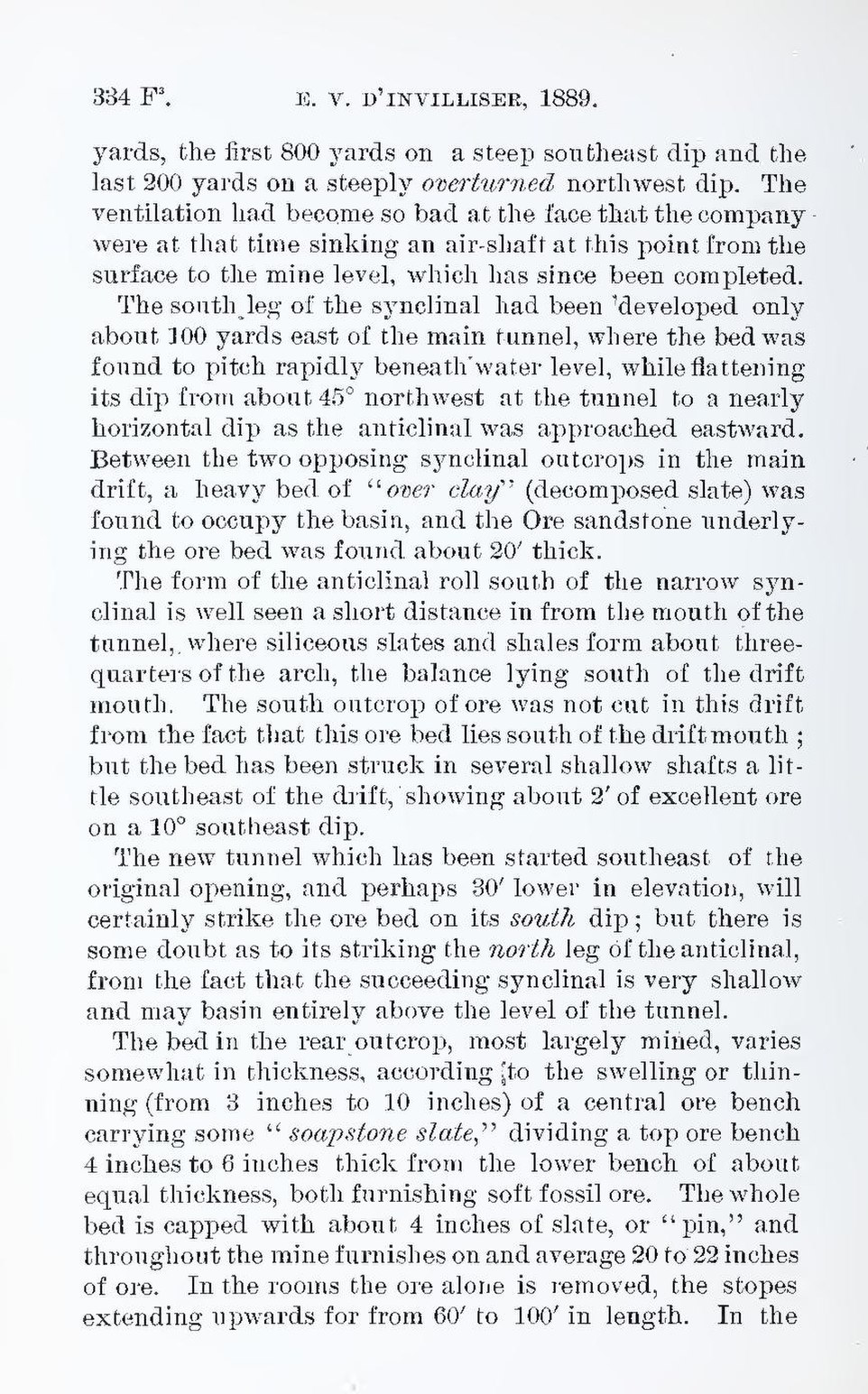yards, the first 800 yards on a steep southeast dip and the last 200 yards on a steeply overturned northwest dip. The ventilation had become so bad at the face that the company were at that time sinking an air-shaft at this point from the surface to the mine level, which has since been completed.
The south leg of the synclinal had been developed only about 100 yards east of the main tunnel, where the bed was found to pitch rapidly beneath water level, while flattening its dip from about 45° northwest at the tunnel to a nearly horizontal dip as the anticlinal was approached eastward, Between the two opposing synclinal outcrops in the main drift, a heavy bed of “over clay” (decomposed slate) was found to occupy the basin, and the Ore sandstone underlying the ore bed was found about 20′ thick.
The form of the anticlinal roll south of the narrow synclinal is well seen a short distance in from the mouth of the tunnel, where siliceous slates and shales form about three-quarters of the arch, the balance lying south of the drift mouth. The south outcrop of ore was not cut in this drift from the fact that this ore bed lies south of the drift mouth; but the bed has been struck in several shallow shafts a little southeast of the drift, showing about 2′ of excellent ore on a 10° southeast dip.
The new tunnel which has been started southeast of the original opening, and perhaps 30′ lower in elevation, will certainly strike the ore bed on its south dip; but there is some doubt as to its striking the north leg of the anticlinal, from the fact that the succeeding synclinal is very shallow and may basin entirely above the level of the tunnel.
The bed in the rear outcrop, most largely mined, varies somewhat in thickness, according {to the swelling or thinning (from 3 inches to 10 inches) of a central ore bench carrying some “soapstone slate,” dividing a top ore bench 4 inches to 6 inches thick from the lower bench of about equal thickness, both furnishing soft fossil ore. The whole bed is capped with about 4 inches of slate, or “pin,” and throughout the mine furnishes on and average 20 to 22 inches of ore. In the rooms the ore alone is removed, the stopes extending upwards for from 60′ to 100′ in length. In the
